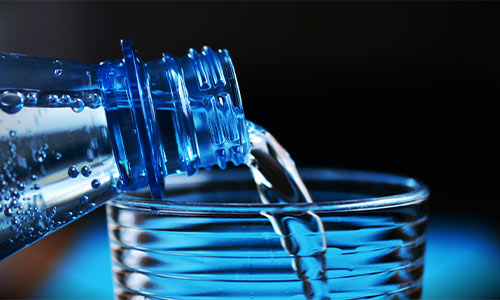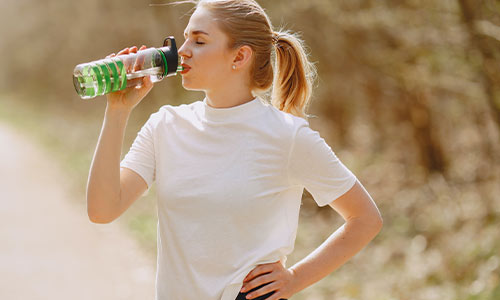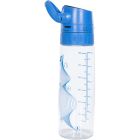The Complete Guide to Hydration for Active Individuals
Author
Whether you're an avid runner, hiker, biker, or outdoor enthusiast, staying hydrated is crucial for optimal performance and overall well-being. The human body is composed of about 60 per cent water, making proper hydration essential to replenish lost fluids during physical activities. This comprehensive guide will provide valuable insights into the importance of hydration, how much water to drink, different hydration methods, and tips to prevent both dehydration and overhydration. From trail running to mountain biking, mastering proper hydration practices will enhance your outdoor experiences and help you achieve peak performance.
- The Importance of Proper Hydration:
Before delving into specific hydration techniques, it's crucial to understand the significance of proper hydration. Staying well-hydrated is essential for maintaining your body's fluid balance, regulating body temperature, and supporting cardiovascular health. Dehydration can lead to fatigue, decreased athletic performance, and even serious health issues. On the other hand, overhydration, though rare, can have adverse effects on sodium levels and overall well-being. Striking the right balance is key to unlocking your full potential during physical activities.

- Determining How Much to Drink:
The ideal amount of water to consume varies based on several factors, including activity type, intensity, duration, weather conditions, age, sweat rate, and body type. As a general rule, aim for around half a litre of water per hour of moderate activity in moderate temperatures. In hotter or more intense conditions, increase your water intake accordingly. Fine-tune your hydration approach based on your experiences and unique body requirements.
- How to Carry Water:
Carrying water efficiently during your activities is vital to maintain hydration levels. The method will depend on the specific activity. For hiking, backpacking, and mountain biking, a hydration reservoir pack proves effective. Alternatively, opt for easily accessible water bottle pockets on backpacks. Trail runners can choose handheld water bottles, hydration waist packs, belts, or vests for on-the-go access to water.
- Hydration Tips for Active Individuals:
- Drink Regularly: Sip water frequently instead of gulping it down in large quantities. This ensures consistent hydration throughout your activity.
- Supplement with Electrolytes: Long-duration activities may lead to electrolyte loss. Snack on foods rich in sodium, potassium, calcium, and magnesium, or use electrolyte replacement sports drinks for sustained energy.
- Account for Altitude: Hydrate more generously when engaging in activities at higher altitudes, as thirst cues may be less pronounced.
- Embrace Hydration in Cold Weather: Don't neglect hydration in colder climates. Hot beverages can provide warmth and hydration during chilly outings.
- Pre-Hydration: For high-exertion activities, consider drinking 16 fl. oz. of water two hours before starting.
- Rehydrate Post-Exercise: Restore fluid levels after your activity by drinking water or electrolyte-rich beverages.
- Plan Water Stops: Plan your route strategically to include water fountains or natural water sources for easy refills.
- Sun Protection: Sunburn can accelerate dehydration. Apply sunscreen or wear protective clothing to safeguard against this.
- Set a Timer: To avoid forgetting to hydrate set reminders on your watch or phone to drink every 20 minutes.
- Preventing Dehydration:
Dehydration can impair athletic performance and lead to various symptoms. Early signs include a dry mouth and decreased energy levels, while more severe symptoms encompass cramps, headaches, and nausea. Combat dehydration by drinking water when thirsty and taking frequent sips during activities.
- Preventing Overhydration:
Overhydration, or hyponatremia, is a condition mainly affecting endurance athletes. In extreme cases, it can lead to serious health consequences. Avoid overhydration by monitoring your water intake and maintaining a healthy sodium balance through appropriate snacks or sports drinks with sodium content

-
 Trespass Crystalline Handsfree Bluetooth Water Bottle£21.55RRP £59.99 Save Up To £38.44
Trespass Crystalline Handsfree Bluetooth Water Bottle£21.55RRP £59.99 Save Up To £38.44
Author
Categories
- Sport (28)
- Product Reviews (3)
- Team Outdoor Look (7)
- Mike Wild (2)
- Mike Payton (2)
- Suse Hammond-Pears (3)
- Snowboarding (12)
- Latest Offers (105)
- Shop Talk (1)
- Competitions (7)
- Walking (413)
- Lifestyle Fashion (8)
- Travel (86)
- Kit Guides (176)
- Workwear Clothing (6)
- Safety Workwear (4)
- Health/Fitness (289)
- Skiing (91)
- Great Outdoors (1316)
- Cycling (92)
- January 2025
- December 2024
- November 2024
- October 2024
- September 2024
- August 2024
- July 2024
- June 2024
- May 2024
- April 2024
- March 2024
- February 2024
- January 2024
- December 2023
- November 2023
- October 2023
- September 2023
- August 2023
- July 2023
- June 2023
- May 2023
- April 2023
- March 2023
- February 2023
- January 2023
- December 2022
- November 2022
- October 2022
- September 2022
- August 2022
- July 2022
- June 2022
- May 2022
- April 2022
- March 2022
- February 2022
- January 2022
- December 2021
- November 2021
- October 2021
- September 2021
- August 2021
- July 2021
- June 2021
- May 2021
- April 2021
- March 2021
- February 2021
- January 2021
- December 2020
- November 2020
- October 2020
- September 2020
- August 2020
- July 2020
- June 2020
- May 2020
- April 2020
- March 2020
- February 2020
- January 2020
- December 2019
- November 2019
- October 2019
- September 2019
- August 2019
- July 2019
- June 2019
- May 2019
- April 2019
- March 2019
- February 2019
- January 2019
- December 2018
- November 2018
- October 2018
- September 2018
- August 2018
- July 2018
- June 2018
- May 2018
- April 2018
- March 2018
- February 2018
- January 2018
- December 2017
- November 2017
- October 2017
- September 2017
- August 2017
- July 2017
- June 2017
- May 2017
- April 2017
- March 2017
- February 2017
- January 2017
- December 2016
- November 2016
- October 2016
- September 2016
- August 2016
- July 2016
- June 2016
- May 2016
- April 2016
- March 2016
- February 2016
- January 2016
- December 2015
- November 2015
- October 2015
- September 2015
- August 2015
- July 2015
- June 2015
- May 2015
- April 2015
- March 2015
- February 2015
- January 2015
- December 2014
- November 2014
- October 2014
- September 2014
- August 2014
- July 2014
- June 2014
- May 2014
- April 2014
- March 2014
- February 2014
- January 2014
- December 2013
- November 2013
- October 2013
- September 2013
- August 2013
- July 2013
- June 2013
- May 2013
- April 2013
- March 2013
- February 2013
- January 2013
- December 2012
- November 2012
- October 2012
- September 2012
- August 2012
- July 2012
- June 2012
- May 2012
- April 2012
- March 2012
- February 2012
- January 2012
- December 2011
- November 2011
- October 2011
- September 2011
- August 2011
- May 2010
- April 2010
- March 2010
- February 2010
- January 2010
- November 2009
- October 2009
- September 2009


Submit a Comment